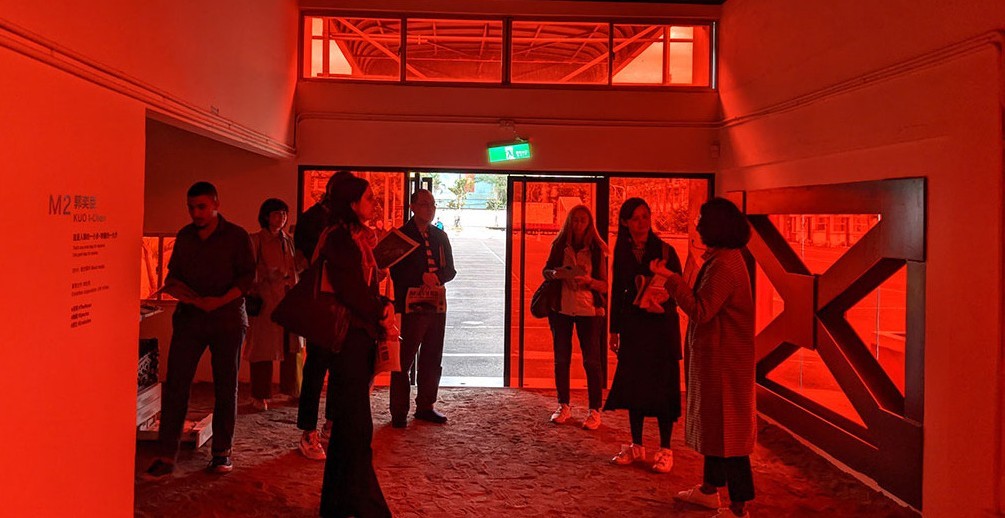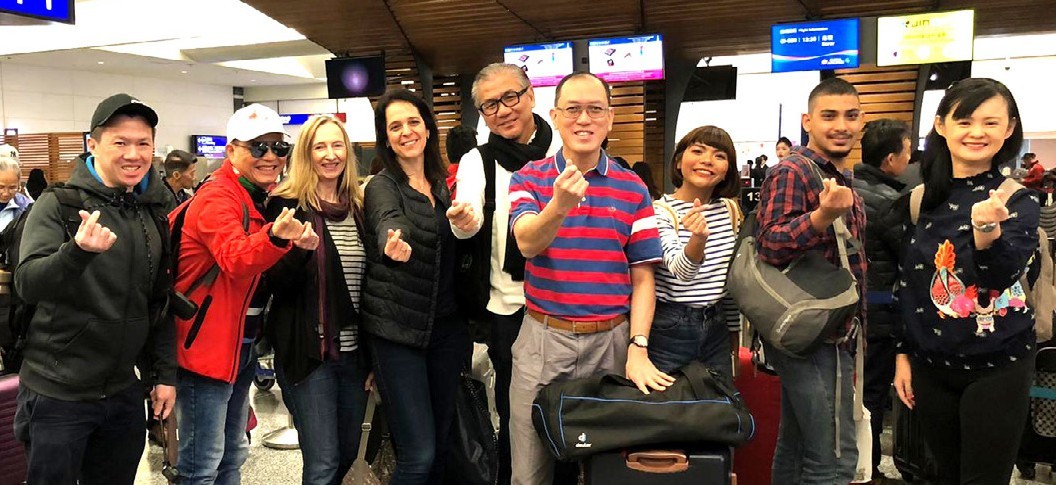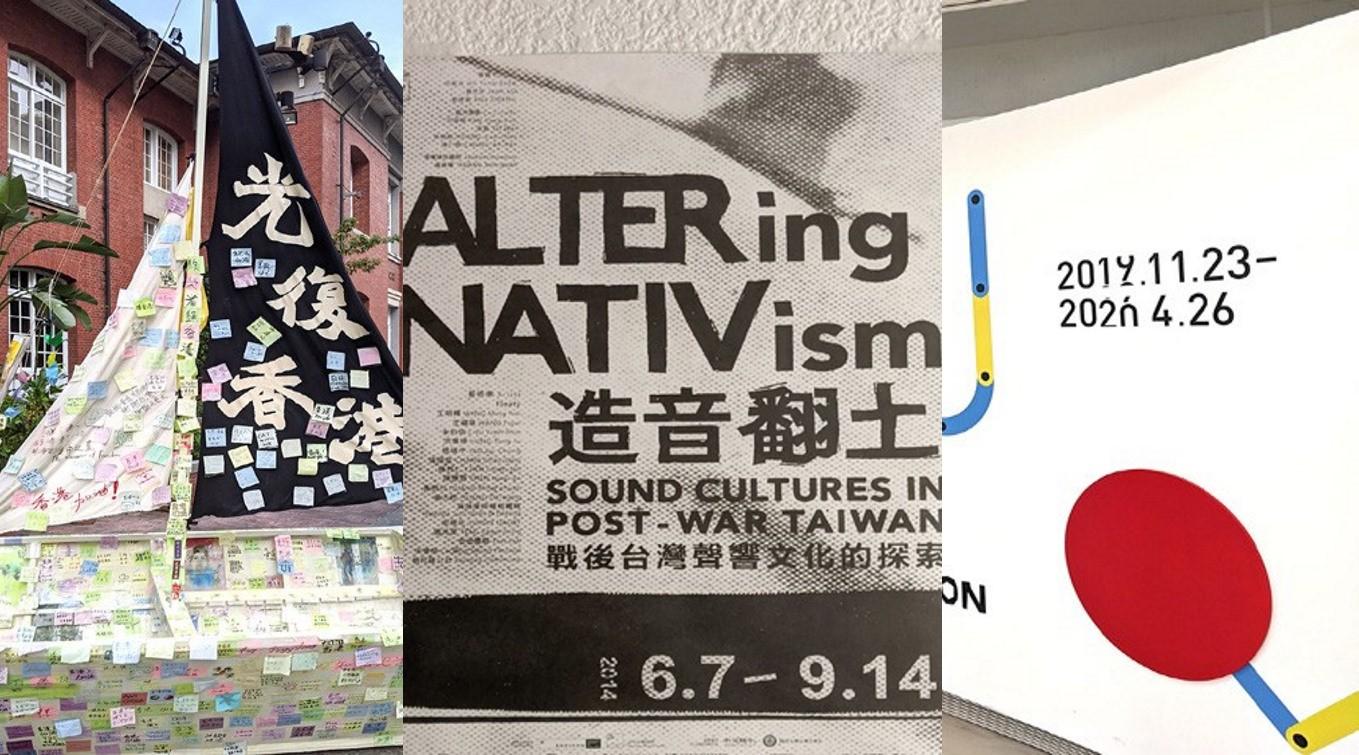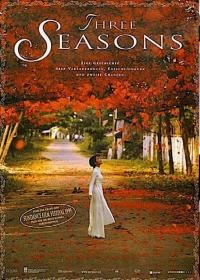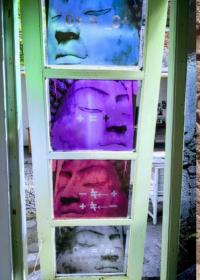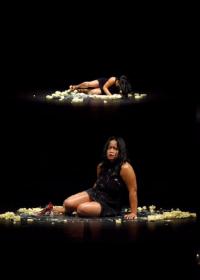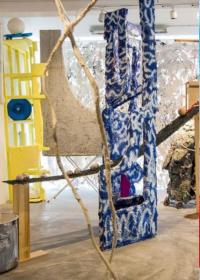by Nurdiana Rahmat and Theresa Tan
On 18 March 2020, Taiwan made the announcement that all foreign nationals will be barred from entering the country. This is the new reality we are living in the thick of the global coronavirus pandemic. It is hard to believe now that just about four months ago, at the end of November, the Asian Art Histories students were in Taiwan and experiencing one of the most exhilarating milestones in our learning journey.
We were in Taipei from 30 November to 4 December 2019. It would be the first trip to Taiwan for some of us while others looked forward to returning to one of their favourite cities. We were very excited to travel together for the first time and to get a brief reprieve from the Singapore heat.
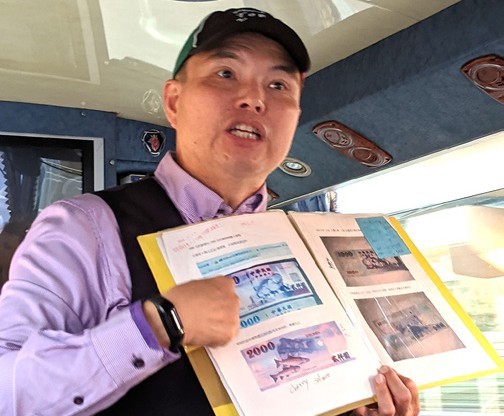
Upon arrival, we met our exuberant guide Alex, who gave us a quick lesson on Taiwan’s history through the artworks featured on the Taiwanese currency notes and a hand- drawn Taiwan map by his daughter, annotated with regional specialties! Throughout the trip, Alex became our much- needed support system – always ensuring the places we visited were ready for our arrival and planning all our meals. Our stay for the trip is the Hua Shan Din Hotel by Cosmos Creation, located in the vicinity of the Hua Shan 1914 Creative Park. The moment we got off the bus, we were greeted by the hotel logo’s three primary colors of red, yellow and blue intersecting with the black and white of the buildings original window frame, which reminds us of Piet Mondrian. Inside the hotel, the interior design incorporates local arts and culture with Lichtenstein-style pop art, with a mascot designed to pay tribute to the historical building’s banking history.
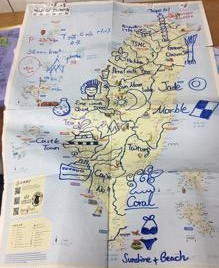
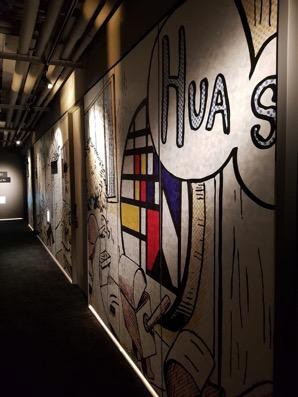
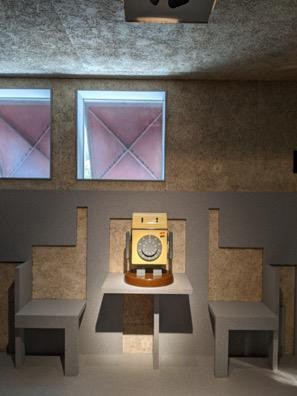
Our first stop is the Eslite’s bookstore at Dunnan to visit the art gallery there. Unfortunately, the gallery has recently closed (permanently) ahead of the planned 31 May 2020 closure of the Eslite bookstore. After local dinner in the basement food court, we went to the Hua Shan 1914 Creative Park, an almost 20,000 square metre park housing various creative art spaces––less than five-minutes walk from our hotel. Originating from an abandoned sake and ginseng factory of Taihoku Winery built in 1914, this hipster park is now home to many designers and artists. This art and culture hub houses facilities for meetings, exhibits and performances inside remodelled brick warehouses. We had our retail therapy in whimsical shops of indie brands, stationery and bookshops. Unfortunately, we arrived late into the evening, so the digital and interactive museums, theatre, and the concert spaces were all closed. However, we chanced upon the outdoor laser light show, sponsored by a sports brand, telling stories of courage, strength and resilience.
On Day 2, we started our day with Apichatpong Weerasethakul’s solo exhibition, The Serenity of Madness at the Taipei Fine Arts Museum (TFAM). Curated by Gridthiya Gaweewong, this exhibition is a survey of Weerasethakul’s artistic practice through some of his experimental and short films as well his photography, sketches and archival material. A highlight from this show is Teem (2007), a 3-channel video installation where Weerasethakul films a sleeping Teem, his partner, every morning throughout the course of Teem’s self- proclaimed winter hibernation. The exhibition spans almost the entire of TFAM’s third floor with a good distribution of work around the space.
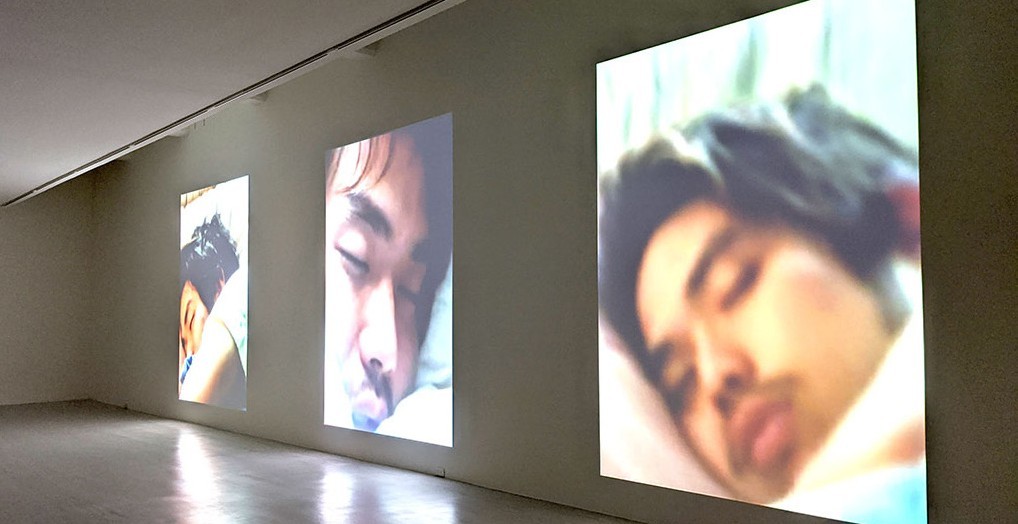
The rest of the third floor, facing Weerasethakul’s exhibition, was converted into Michael Lin’s 24/7, a tatami-filled interactive exhibit space resembling a cosy traditional Japanese living room. The walls are painted in grid-shaped blocks of red, blue and green resembling a form of urban planning. Audiences are encouraged to co-exist with the space and most took it as a much-needed resting space after walking around the exhibits.
On level two of the museum, the exhibition On the Island Tales: Taiwan and Australia commemorates the 20th anniversary of friendship between TFAM and Perth Institute of Contemporary Arts since 1999. Curator Chien Cheng-Yi used the exhibition as a platform to tell stories rooted in local cultures that explore the multiple possibilities created by time and timely meetings. As opposed to history, which emphasizes realistic descriptions of the past, this exhibition employs fictional language to interpret and reinterpret stories from the past and various subjects. This process of “remémoration” forms a bridge between time and locality. Thirteen artists from Taiwan and West Australia were invited to be part of this journey inspired by the idea of tales, of imagination and exploration between two islands, from two cities, revolving around stories, rumors from the grapevine, records, and even inconsequential and personal memories.
The final exhibition we saw in TFAM was Art of Motion, an exhibition featuring commissioned works by four contemporary Taiwanese artists responding to the notions of movements through industrial machineries. One of the most memorable work from this exhibition is Chiu Chao Tsai’s Percussions (2012) where the artist lined everyday items such as mugs, wine bottles and dishes on three wooden shelves which are connected to a toy piano. It is an incredible participatory work where audiences are invited to play a piano key or tune to trigger corresponding small hammers to strike these items on the shelves to play a symphony of sounds by everyday objects.
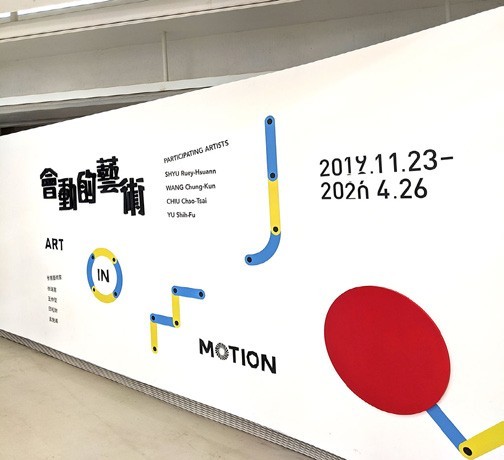
Photo by Nurdiana Rahmat
After lunch, we went to the Museum of Contemporary Art (MOCA) to view the exhibition Co/Inspiration in Catastrophes. Right outside MOCA, a huge installation of a sampan fishing boat welcomed us. Numbered “MG3-44187,” this sampan is the Japanese fishing boat, “Fujimaru 7” from Kesennuma City in Miyagi Prefecture, Japan that was found on the shore of Nantian in Taitung’s Daren Township in March 2014. It was dragged into the ocean after the tsunami triggered by the Tohoku earthquake hit Fukushima on March 11, 2011. The fishing boat drifted from Japan to Taiwan, which substantiates the law of natural flow—propelled by ocean currents, regional borders are no longer interpreted in terms of national borders. Disasters happening around the world caused by extreme weather conditions are all taking place in a closely connected world.
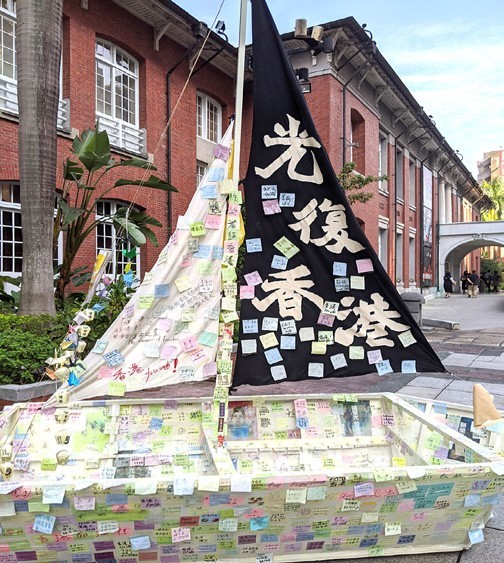
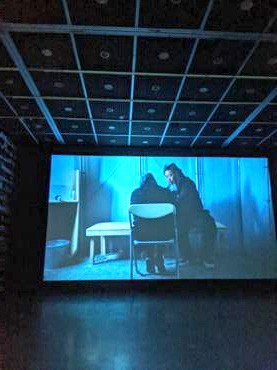
Stepping into Co/Inspiration in Catastrophes, we were absorbed by the somber artworks covering “natural disasters” to “man-made calamities,” and even “shared karmic consequences” that mix natural and man-made disasters. Curators Huang Chien-Hung and Yuki Pan presented Pierre Huyghe’s Cerro Indio Muerto, an image of an apocalyptic landscape that mixes natural and man-made disasters right at the beginning of the exhibition. It then brought the viewers from natural disasters through to man-made disasters, cleverly utilizing the long corridor of the MOCA. Ai Weiwei’s lament for the lives of refugees and Pakavulay’s red quinoa bamboo heart mourns for the traumas caused by past catastrophes. At the end of the exhibition, the viewer witnesses an imminent tsunami that is about to overwhelm Taipei in Wu Chi-Tao’s work, which embeds the disaster in a gloomy, ethereal yet somewhat perfect state.
After the sobering walkthrough, we were thankful to end the day of museum and gallery hopping at 1839 Contemporary Gallery. This space focuses entirely on photography work and they were hosting Yutaka Matsubara’s Local Public Bath “Sento”. Matsubara spent about 11 years between 2006 to 2017 photographing public bathhouses in his hometown of Mie Prefecture, Japan. We were delighted to be given a tour by Matsubara himself and he provided interesting insights into the unique personalities of these bathhouses through their intricate wall art and sculptural fixtures. After the tour, the group sat down with curator and director of the Gallery, Dr. Edward Liu to discuss about the state of photography in Taiwan. Having existed for over ten years in a city where photography may not be one of its most popular mediums as a consumer, we find 1839 Contemporary Gallery to be such an inspiration. For some of us, we decided to end the night exploring Ximending, bought our second bubble tea for the day (when in Taiwan!) and a late-night karaoke.

On Day 3, we travelled a little outside of Taipei’s main city to the independent art space Bamboo Curtain, which was located amidst the greenery of Danshui. Its curator Iris and her dog (who stole one of our classmate’s heart immediately) welcomed us as we walked into this former farm and gave us a detailed tour of the various carved out spaces that promoted sustainability by launching art projects within the community to bring awareness about the environment, global warming and sustainable living. Margaret Shiu, a renowned cultural activist in Taiwan and the founder of Bamboo Curtain, hosted us personally.
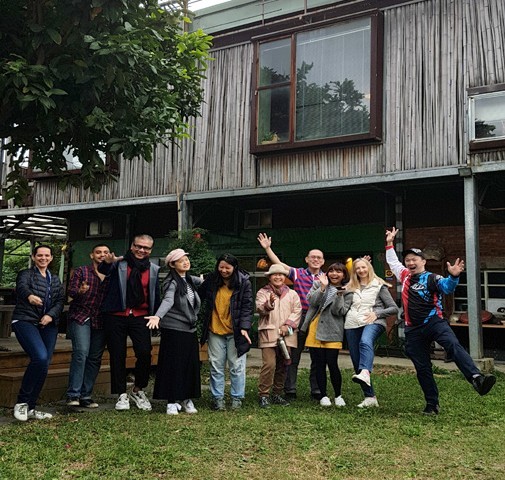
After bidding farewell to Margaret, Iris and the dog, we visited TheCube Project Space which is currently hosting Malaysian artist Au-Sow Yee’s solo exhibition, Still Alive. The exhibition presents her “live cinema” which was produced using her own image capturing devices that she created in her earlier practice. We sat down with the curators to chat about their amazing “Talking Drums Radio” project where they collaborate with artists, scholars, internet activists among others, to explore the city’s sound culture. They keep an archive of their projects on their website at http://talkingdrums.tw.
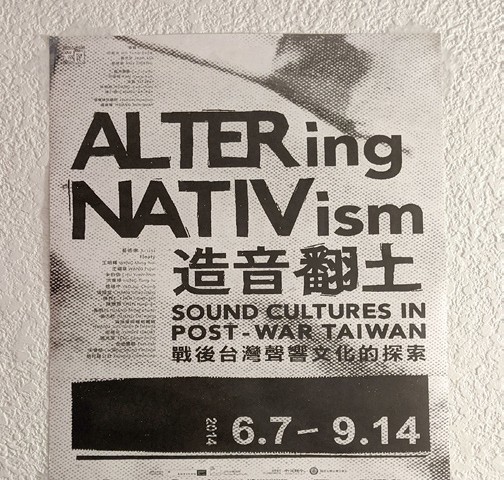
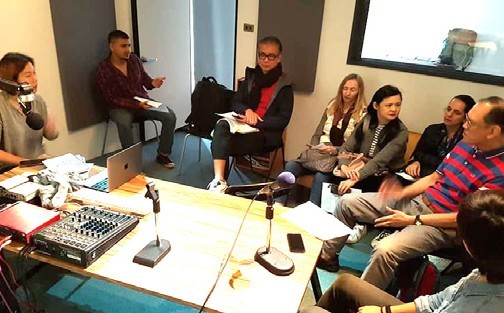
team. Photo by Adrian Liaw
Any trip to Taipei is not completed without visiting the world-renowned National Palace Museum, most known by its abbreviated Chinese name GuGong. We quickly figured out that we needed to use the same strategy when visiting other large museums, that is, to focus on the highlights and not attempt to cover the sprawling place in one afternoon. The museum’s collection include paintings, ceramics, calligraphy, jades, bronzes, curios, documents and rare books laid out across three floors of a purpose-build Chinese architecture building, punctuated by interactive multimedia narratives. After zooming in on the national treasure, the “Jadelite Cabbage” (a piece of jadeite carved into the shape of a Chinese cabbage head, and with a locust and katydid camouflaged in the leaves), all of us went our separate ways in pursuit of whatever interests us the most.
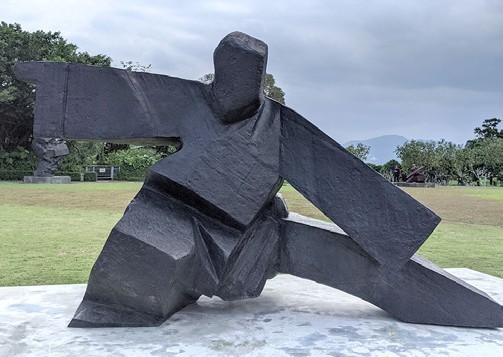
Some experiences will last forever. On the last day of the trip, we had the morning to ourselves and five of us (including both writers) headed up north to Juming Museum and we were rewarded with beautiful views of the Pacific Ocean coast along the way. The entire museum, which includes a sculpture park, is devoted the world renown sculptor Ju Ming’s colossal oeuvre. One of the museum buildings also hosts temporary exhibits such as Dina Goldstein’s ironic “Fallen Princess” series. Our favourite was the main museum itself, nestled in the middle of the sculpture park, hosting a permanent exhibition of Ju Ming’s earlier works and his Taichi series which truly captures the state of motion through sculptural work.
The Juming Squad rushed back to Taipei after lunch and arrived in time at the National Taipei University of Education for a conversation with their newly-hired academic Francis Maravillas about their MA in Curatorial and Critical Studies in Contemporary Art programme. It was interesting to learn about the pedagogy of their MA programme and some of us were tempted to return Taipei as their students (the Taiwanese hospitality and delicious food are very seductive)––if we still remain energetic after our own thesis submissions.
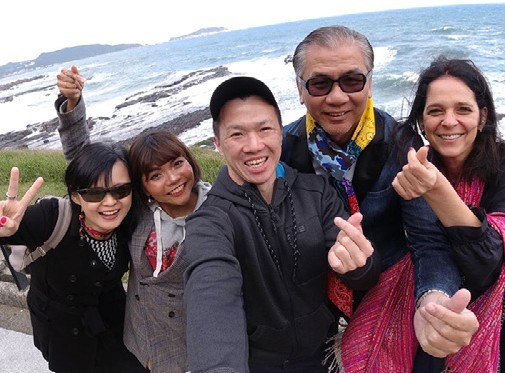
After we bid our goodbyes, we visited the Taiwan Contemporary Culture Lab (C-Lab). For some of us, this space is a definite highlight of the entire trip. Located at the former Air Force Command Headquarters, a visit can only be made possible by making an appointment. We visited their annual exhibition, City Flip-Flop. This project is part of C-Lab’s initiative to engage Taiwan’s creatives through artistic presentations that involves historical and cultural data collection, archival research, sound art, theatre performance and other forms of creative outputs.
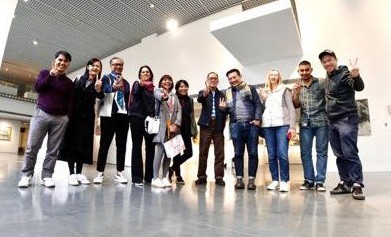
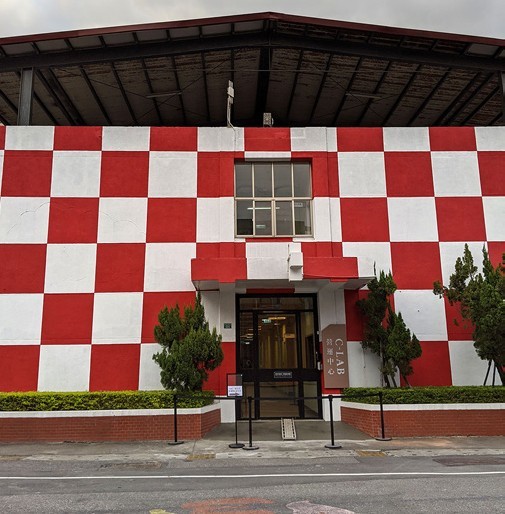
The exhibition was rich with research and archival materials. It was definitely a treat for art history students like us. We had an amazing tour by Juliet and her team, and some of the exhibits that stood out for us were Haruko Sasakawa’s Beautiful Smile (2019) and Chin Cheng-Te’s Tender Soul – Cold-War Era Beitou Waitress Memorial Steles and The Chill of the Exquisite Twin Cities – Cold-War Era Taipei Bar Girl Memorial Steles. Both projects gave insights on how images of women were implicated during times of war. Sasakawa’s work centers around the main subject of an actress being filmed as a nurse and instructed to project a “beautiful smile” while Chin’s is drawn from the controversy around the archival image of the “Beitou Bathing Scene”. This image, featuring an American soldier sharing a hot spring bathtub with two Beitou waitresses, received critical responses when it was first published especially towards the two women captured. Chin’s project attempts to raise questions on the skewed gaze and reception towards the female body and viewing them on-site at the former Air Force Command Headquarters provided sense of time and spatial experience. It was an activity-filled four days in Taipei with meaningful exchanges between art educators, artists and curators to give us a taste of real experiences in the field of art history and contemporary art. As they say in Taiwan, jiă bà buāi! (how are you? / have you eaten?) and so, we ended our last night in Taipei with a dinner over a hotpot.
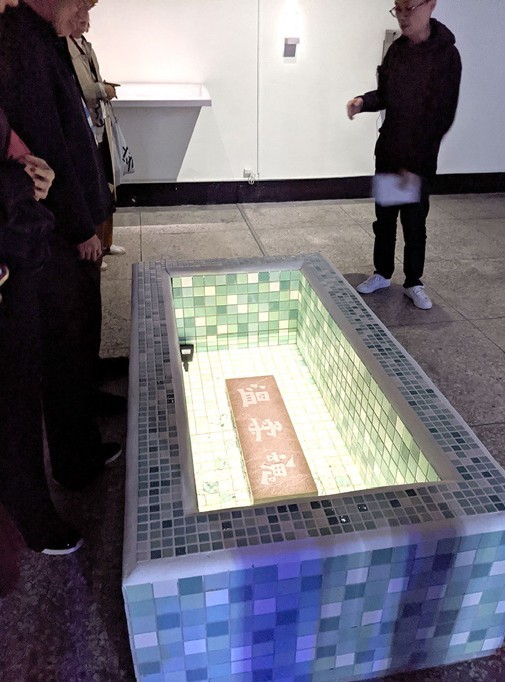
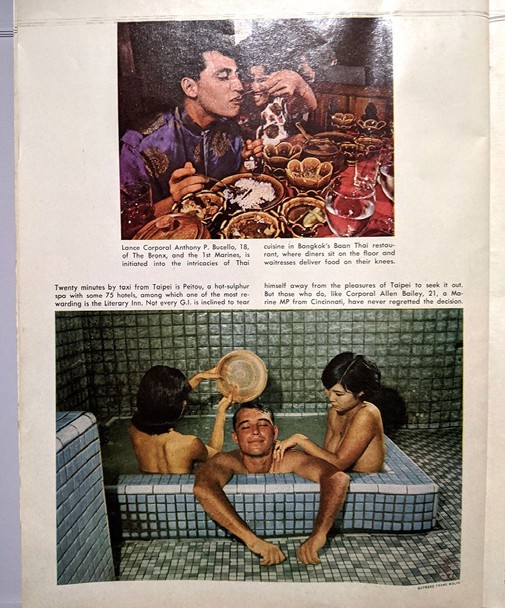
Nurdiana Rahmat graduated from the MA Asian Art Histories programme in 2020.
Theresa Tan is a current student of the MA Asian Art Histories programme.
